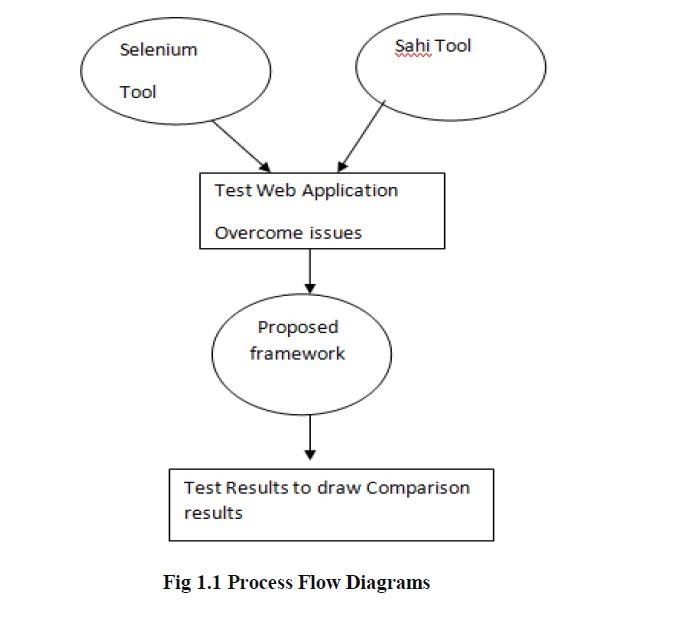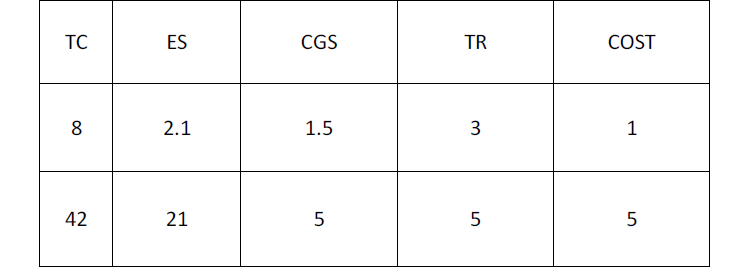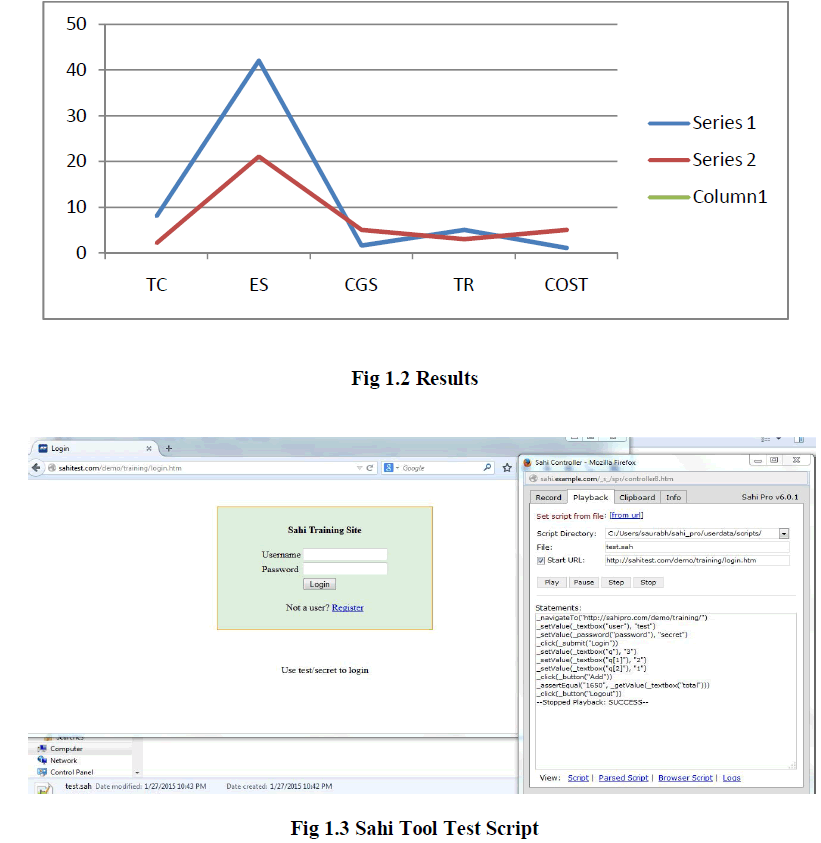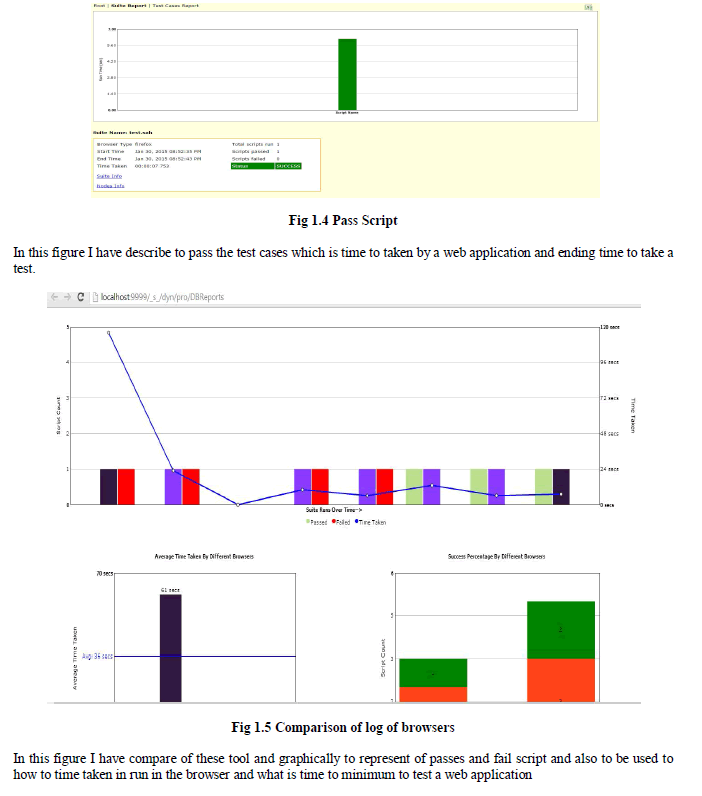ISSN ONLINE(2320-9801) PRINT (2320-9798)
ISSN ONLINE(2320-9801) PRINT (2320-9798)
| Saurabh Dwivedi1, Garima Gupta2 |
| Related article at Pubmed, Scholar Google |
Visit for more related articles at International Journal of Innovative Research in Computer and Communication Engineering
Web testing is the name given to software testing that target on web applications. Performance testing on web based system before going live can help in resolving several issues. Manual testing is a time consuming testing and is difficult to repeat but cannot be overlooked because each time software does not perform well according to specifications. The application will record and report the exact command that is the root cause of problem. Once the problems are identified and the bugs are fixed, one can execute the very same set of commands to verify the success. There are number of testing tools available for access with the development of test automation. This paper compares two testing tools named SAHI and SELENIUM and proposes a framework which will support the automated test scenario for web based applications. Automation framework is an execution environment. It is overall system in which the tests will be automated. It is defined as the set of issues, concepts, and practices that constitute a work platform or support for automated testing in a SAHI and Selenium .The Objective of this thesis is to perform Automation Testing for web applications using Testing Tool “Selenium” & SAHI. With this web testing tool, a framework is proposed which will overcome some issues that occur while using SAHI & Selenium. Those tools are abstracted to be used and issues occurred will be resolved in proposed framework. In this way, by implementing proposed framework one can get enhanced version of SAHI & Selenium.
KEYWORDS |
| Selenium, Sahi, Selenium Ide, Automation Testing Tool. |
I. INTRODUCTION |
| Testing is a critical part of software. Various tools are available in the market. Here I have taken two tools Sahi and Selenium and perform a test of web application to find out which tool is performing better on the basis of criteria such as cost , time complexity and execution speed and propose a new frame work which will overcome the issues of SAHI and SELENIUM tools. There are number of testing and tools to use to test of applications. Some tools to discuss of previous researchers and compare of these tool and based on performance and criteria. SAHI is automation and testing tool for web application. It is open source tool. SAHI open source is written in java script .SAHI pro is currently in version 6.1.2 used to industry. SAHI was born as an open source product in 2005 with specific focus on automation of emerging web 2.0 technologies but as a tool geared towards testers. SAHI Pro is truly a world class web test automation product that supports technologies such as flex applets load testing etc. Selenium is a robust set of tools that supports rapid development of test automation for web-based applications. Selenium is a web testing tool which uses simple scripts to run tests directly within a browser. It uses JavaScript and I frame to embed the test automation engine into the browser. This allows the same test scripts to be used to test multiple browsers on multiple platforms |
II. LITERATURE SURVEY |
| Nisha Gogna has presented the most basic features of Browser based automated test tools Watir and Selenium for a web application. In all one have to learn Ruby (unless you choose) first for Watir and every browser requires a different library for running test cases while Selenium has its own IDE and can record and playback tests. But for Selenium one has to learn a vendor script first that is Selene’s unless tests have to be written in any other language and has trouble recording I Frames, Frames and popup windows while Frames and pop-ups are accessible using API in WATIR. Also, selenium has Deep learning curve to switch from Selenium IDE to Selenium RC as compared to Watir. To tackle this problem, future work is required to be done to cover the limitations of one tool with respect to another. |
| Vandana Chandel has presented software testing has become necessity of companies because it saves both time and money. Apache Jmeter and Load Runner are very good tool for stress and performance testing. Based on this research, we recommended The Apache Jmeter as the tool to go forward with. It has a simple, clean UI that clearly shows what is going on without trying to do too much, and offers great power and simplicity with its unique. Moreover, it is free of cost and having Complete portability and 100% Java purity .Both of the open source projects have merits, but neither one is ideal. Our approach will be to work with the Apache Jmeter development team to resolve the most serious offenders. |
| Richa Rattan has represented in a paper the complete Selenium test automation is designed specifically for web testing. It will not allow you to automate other technologies. The Selenium solution is highly complex, involving the integration of many components. The process for Selenium test automation necessitates a developer test skills set .when making a tool selection in this area, it is important to take into consideration much more than the cost. I conclude that selenium may be right for certain specific situation, but QTP can be the better choice in many more situations. |
III. RELATED WORK |
| To proposed a frame work and steps to be followed in proposed frame work. |
| 1-Create a proposed frame work. |
| 2-Identify an application under test |
| 3-Define tool and comparison criteria |
| 4-Execute test |
| The objective of the research is to conduct a performance evaluation and comparative study of automated tools such as the sahi and selenium based on criteria such as the efforts involved with generating test scripts, cap ability to play back the scripts, result reports, speed and cost. For the purpose of this thesis we took an existing web based application that was perform in proposed framework on it by these two automated testing tools. In this research work test to a web application using software testing tool and generate a three phases to its following them and it is useful for the web testing. |
 |
| 1 Selenium Tool Selenium is a robust set of tools that supports rapid development of test automation for web-based applications. Selenium is a web testing tool which uses simple scripts to run tests directly within a browser. It uses JavaScript and I frames to embed the test automation engine into the browser. This allows the same test scripts to be used to test multiple browsers on multiple platforms. |
| 2 Sahi Tool Sahi is automation and testing tool for web application. It is open source tool. Sahi open source is written in java script .Sahi pro is currently in version 5.1.2 used to industry. Sahi was born as an open source product in 2013 with specific focus on automation of emerging web 2.0 technologies but as a tool geared towards testers. Sahi Pro is truly a world class web test automation product that supports technologies such as flex applets load testing etc. |
| 3 Proposed Framework We will evaluate two tools for their ability to satisfy a specific goal .the process of concept. The phases are |
| 1- Identification the application under test. |
| 2-Define POC steps. |
| 3-Define comparison criteria |
| 4-Select tool for comparisons |
| 5-Execute test for comparisons |
| 6-Compare result |
| 7- Draw conclusion |
IV. PROPOSED ALGORITHM |
| In here use of a algorithm in following steps is included |
| Step1- Identify performance criteria for evaluation of SAHI and Selenium Testing Tools. |
| Step 2- Identify an application in under test |
| Step3- Find out criteria to be implemented in proposed framework. |
| Step 4- Execute test |
| Step5- Draw a Conclusion of Graph |
Parameters for Comparison of Tools: |
| 1TimeComplexityThe way in which the number of steps required by an algorithm varies withthe size of the problem it is solving. Time complexity is normally expressedas an order of magnitude. |
Sahi Tool Calculated of Time Complexity |
| Starting Time- 8:52:35 |
| Ending Time- 8:52:43 |
| Total Time ET- ST = 8 Sec |
Selenium Tool Calculated of Time Complexity- Predict a test of web application estimation of time to be calculated |
| ET-ST=42 sec |
| 2-Execution Speed -The speed with which a computational device can execute instructions. Measured in MIPS Sahi Tool Calculated of Execution Speed |
| Σ t/n = 8/3 |
| 2.1 sec |
Selenium Tool Calculated of Execution Speed |
| Total Time and number this step to pass of application under a test |
| Σ t/n= 42/2= 21 sec |
| 3- CGS System-Centimetre, gram, second, system of units. It was replaced by the MKS system which, since 1960, has been replaced by the S.I units |
| Sahi Tool |
| Sahi tool be calculated of 1.5. |
| Selenium Tool |
| Selenium tool be calculated of 5 |
V. RESULT AND ANYALSIS |
| Test Result Analysis generates graphs from the data collected during the test execution. |
 |
 |
| In this diagram represent a sahi tool to use a test of a web application and recording part of the here to show of the figure and recorded of script in sahi and play to any browser. |
 |
VI. FUTUREWORK AND CONCLUSION |
| This proposed framework is based on comparison of Sahi and Selenium tools used for testing web applications. In this paper a framework has been proposed to perform testing for web applications based on Software Testing Tool “Selenium IDE”. and Sahi .On the basis of analysis performed on Sahi and Selenium based on some criteria such as Execution Speed and Time Complexity , as a future work this proposed frame work can be implemented as a new tool to be used in market. Selenium is proposed framework comparison of many tools used for testing web applications. In this paper the proposed Framework has been created to perform Testing for web applications using Software Testing Tool “Selenium IDE”. We have better to perform a test of sahi to the comparison of selenium to bases of some criteria. In future work in this proposed frame work to enhance that a complete a tool of version in use in market. The complete Selenium test automation is designed specifically for web testing. It will not allow you to automate other technologies. The Selenium solution is highly complex, involving the integration of many components. Automation necessitates a developer test skills set .when making a tool selection in this area, it is important to take into consideration much more than the cost. I conclude that selenium may be right for certain specific situation, but SAHI can be the better choice in many more situations. |
References |
|